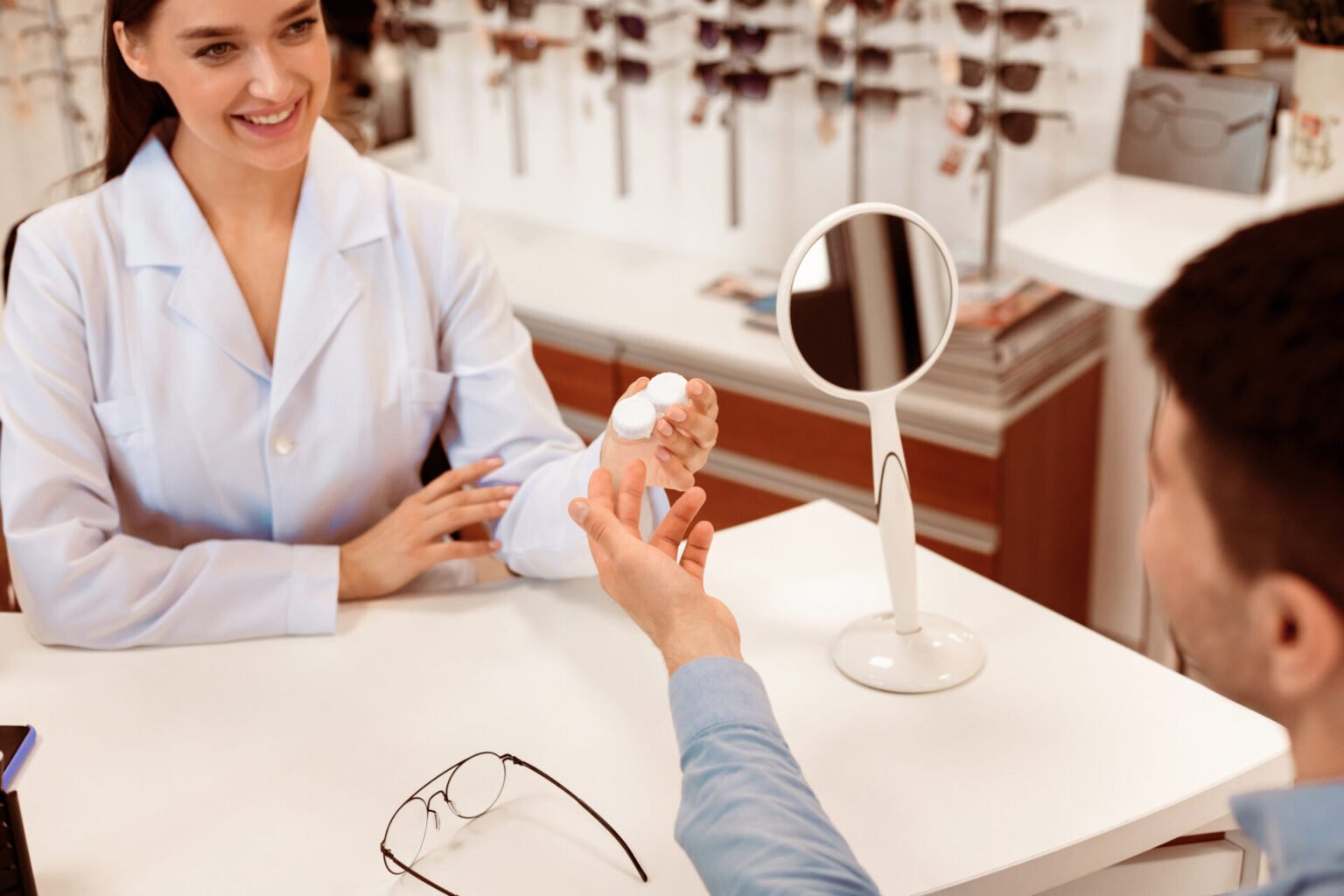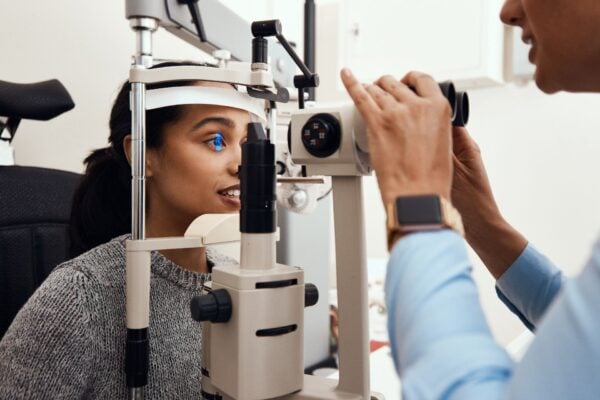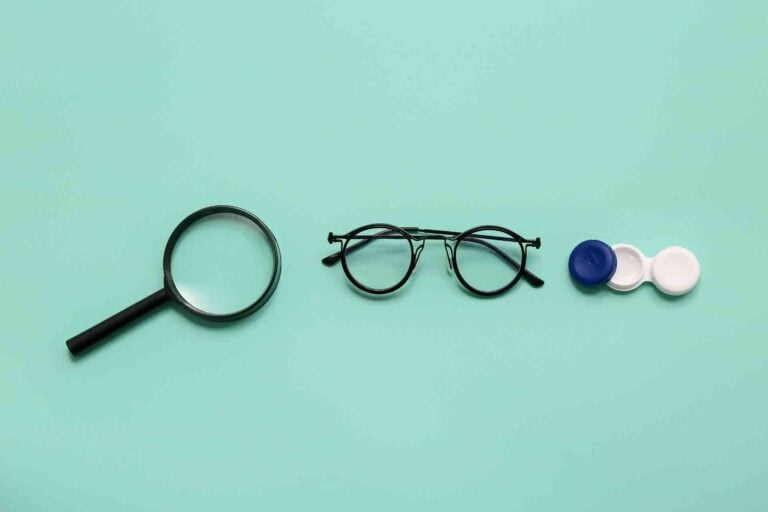
The Complete First-Time User’s Guide on How to Get Contacts

Paul Slusher
CEO

Thinking about switching to contact lenses? Whether you’re tired of wearing glasses or just exploring your options, getting contacts for the first time can feel overwhelming. Between prescriptions, fittings, and finding the right brand, there’s more to getting contacts than placing an online order.
This guide walks you through the entire process:what to expect, what to ask your optometrist, and how to avoid the common pitfalls that can catch first-time users off guard. You’ll learn what’s required, what’s optional, and how to make the experience as smooth and affordable as possible.
Do You Need a Prescription for Contacts?
In Canada, it’s not legally required to have a prescription to order contact lenses online. However, we strongly recommend that every first-time contact lens wearer get a proper eye exam and contact lens fitting from an optometrist. Lenses that don’t fit your eyes correctly can lead to discomfort, blurry vision, or serious eye health issues, even if your vision seems fine at first.
United States law requires a valid contact lens prescription before any retailer (online or in-store) can sell you lenses. The U.S. system includes a verification step where the seller must confirm your prescription with your eye care provider.
Whether or not it’s required by law where you live, getting a proper fitting protects your eye health and helps you avoid costly trial and error.
What Happens During a Contact Lens Fitting?
If you’re getting contacts for the first time, a proper fitting is the most important part of the process and often the most overlooked. A contact lens fitting ensures that your lenses match the shape of your eye, provide clear vision, and feel comfortable throughout the day. It also helps prevent irritation, dryness, and other long-term issues. Here’s what a typical contact lens fitting process looks like:
1. Eye exam and measurements
Your fitting begins with a complete eye exam. The optometrist will assess your overall eye health, confirm your vision prescription, and take detailed measurements of your eyes, including the curvature of your cornea, the size of your pupils, and how your eyes focus. These measurements are critical for determining the exact shape, size, and type of contact lenses that will sit correctly in your eyes.
2. Trial lens selection and insertion
After reviewing your measurements, your eye doctor will select a pair of trial lenses that match your vision needs and eye shape. If it’s your first time wearing contacts, they’ll also show you how to insert and remove your lenses properly, as well as how to use the contact lens solution and lens case if needed. You’ll often try the lenses on in the clinic so the optometrist can check how they sit on your eyes before you leave. If the fit looks good and your vision is stable, you’ll be sent home with those trial lenses to test over several days.
3. At-home trial period
You’ll wear the trial lenses during your regular daily routine to see how they feel in real life. This gives you time to evaluate comfort, vision clarity, and whether the lenses stay hydrated throughout the day. If you experience any discomfort, dryness, or blurred vision, make note of it to discuss at your follow-up.
4. Follow-up appointment and adjustments
At your follow-up appointment, your optometrist will examine your eyes while you’re wearing the lenses to see how they’re fitting. They’ll ask about your experience, including any comfort issues, vision problems, or concerns. If the lenses weren’t a good match, your optometrist may recommend trying a different brand, size, or lens material. You’ll then begin another short trial period with the new lenses and repeat the process until the right fit is found.
How Many Visits Will the Fitting Process Take?
Most first-time contact lens wearers can expect at least two to three visits to complete the fitting process.
Each brand and lens type fits slightly differently, so multiple trials are common. This is especially true if you’re trying newer soft lenses made with silicone hydrogel or switching between daily and monthly disposables. Some optometrists may also make small adjustments in base curve or diameter to fine-tune the fit.
In total, it may take several weeks to finalize your prescription — longer if you’re switching brands or looking for premium upgrades. The good news is that once you’ve found the right lens, future visits are much simpler, often just a quick annual checkup to renew your prescription.
What You Should and Shouldn’t Pay For
When it comes to getting fitted for contact lenses, it’s important to understand what you’re being charged for and what you shouldn’t have to pay for.
What you should pay for |
What you shouldn’t pay for |
| One-time fitting fee: This covers the entire fitting process, including your initial appointment, trial lens selection, follow-ups, and adjustments. | Trial lenses: These are free. Manufacturers provide trial lenses to optometrists at no cost, so there should never be a fee for this.
Extra fitting visits: If your provider charges per visit, that’s a red flag. |
Understanding pricing upfront helps you avoid surprise costs and ensures you’re working with a provider who puts your needs first. Here are some questions to ask before committing to a provider:
- “Is the fitting fee a flat rate or per visit?”
- “Are all follow-up visits included in the fee?”
- “Do I have to pay anything for trial lenses?”
If the clinic charges extra for each visit or the lenses themselves, you may want to look elsewhere.
Can You Try Multiple Lenses at Once?
If you’re hoping to compare different lenses side by side, it’s reasonable to ask. Many optometrists are open to giving you two trial lenses at once, especially if you’re returning for a follow-up and they’re confident you’re committed to finding the right fit.
That said, very few will offer three or more at once. Too many options can make it hard for you to give meaningful feedback, and it complicates the fitting process.
Trying multiple brands can be helpful if you’re deciding between different materials or types, like dailies versus monthlies. But if your optometrist prefers to offer one trial at a time, it’s usually because they want to see how your eyes respond without adding variables. They may want to test one brand fully before moving on to another.
The best way to get more flexibility is to communicate clearly. If your optometrist knows you’re serious about finding the right fit, and not just looking for free lenses, they’ll be more likely to accommodate your request.
How To Choose the Right Brand for You
Finding the right contact lens brand is a process of trial, feedback, and adjustment. Each brand has its shape, material, and feel. What works well for one person might not work for another.
Why Optometrists Recommend Their “Favourite” Brands
Most optometrists have one or two brands they rely on to start the fitting process. These are often lenses they’re familiar with, have successfully fit many times before, or receive strong support from manufacturers. For example, Biofinity and Acuvue Max are two brands commonly recommended during initial fittings, not because they’re perfect for everyone, but because they work well for many people.
In some cases, optometrists receive promotional pricing or fitting incentives from manufacturers, which can influence which brands they suggest first. This doesn’t necessarily mean the recommendation is wrong. Often, these lenses are high quality, but it’s worth knowing that your first trial may be based partly on what your optometrist prefers, not just on the best lens for you.
If the first brand doesn’t feel comfortable or provide clear vision, a good optometrist will have no issue switching to something else. That’s part of the process, and it’s completely normal to try more than one lens before finding the right fit for extended wear.
Why Switching Brands Can Extend the Fitting Process
Once you’ve been fitted with a contact lens that works well, switching to a different brand means starting the fitting process all over. Each lens brand has its own shape, base curve, material, and how it interacts with your tear film, which means even a small change can affect how the lens fits and feels on your eye. What seems like a minor upgrade can quickly turn into another cycle of trial, adjustment, and follow-up appointments.
Every time you switch brands, your optometrist needs to reevaluate the fit, give you new trial lenses, and schedule one or more follow-up visits. In many cases, this will require you to pay another fitting fee or be charged for a second fitting process.
If your current contacts are comfortable and working well for your vision, it’s often best to stick with them. The potential benefits of switching, such as slightly improved breathability or moisture retention, don’t always outweigh the extra time, cost, and hassle involved. Unless you’re having problems with your current lenses, the most efficient option is usually to keep wearing what works.
Understanding Physical Fit vs. Psychological Feel
When trying a new contact lens, it’s common to feel like something is “off.” Even when the lens technically fits your eye perfectly, you may feel discomfort. That discomfort isn’t always caused by a poor physical fit. In many cases, it’s simply your eye reacting to a different feel, especially if you’ve already adapted to a previous lens.
Your eyes and brain get used to the shape, texture, and movement of a specific lens. So when you switch brands, even to something higher quality, the new lens might feel wrong at first just because it’s unfamiliar. Patients often assume this means the lens is a bad match, when really, it’s just a matter of adjustment.
This is why it’s important to give each new lens a fair trial period before deciding it doesn’t work. A little patience can go a long way. If the new lens still feels uncomfortable after several days of wear, your optometrist can reassess. But if you stick with it and your eyes adapt, you may end up with a lens that’s better suited to your needs in the long run.
Where Should You Buy Contact Lenses?
Once your contact lens prescription is finalized, you’ll need to decide where to buy your lenses. You can purchase them directly from your optometrist or order them online. Both options are legal and available in Canada, but they come with different price points, policies, and levels of convenience.
For most people, especially after their fitting is complete, buying online is the simpler and most affordable choice.
Optometrists typically charge 10% to 50% more than online retailers for the same lenses. Authorized online retailers, by contrast, usually offer transparent pricing, easy reordering, and more flexibility in how much you want to buy at once.
If your lenses are already working well, ordering online is typically the most efficient way to restock. Just make sure you’re entering your prescription details accurately and staying up to date with regular eye exams.
When To Renew Your Prescription
Even if your contacts feel comfortable and your vision seems clear, your eyes can change without you realizing it.
Most optometrists recommend having your eyes checked at least once a year for proper care and healthy eyes, especially if you’re wearing contact lenses every day. Even though there is no law in Canada requiring an annual renewal for online orders, that flexibility shouldn’t be mistaken for a permanent green light. Lenses that once fit well may stop fitting correctly as your eyes naturally change over time.
For some people, especially those with stable prescriptions or low-risk eye health, a checkup every two years may be enough. But if you’re prone to vision changes, have dry eyes, or any other eye conditions, you may need to go in every six to 12 months.
A renewed prescription ensures you’re continuing to wear lenses that fit, breathe, and function properly. It’s a simple step that helps you avoid long-term discomfort, strain, or complications.
We’ll Be Here When You’re Ready To Order
Getting contact lenses for the first time takes a little patience, but once your prescription is finalized and you’ve found a lens that works, the hard part is over. From there, it’s all about convenience, price, and making reordering as simple as possible.
At Contacts For Less, we make it easy to get the lenses you need without markups, hidden fees, or hassle. Whether you’re placing your first order or restocking your favourite brand, our goal is to help you save money without compromising on quality.


 US website
US website



